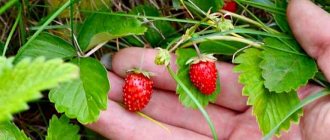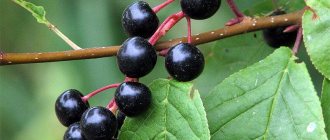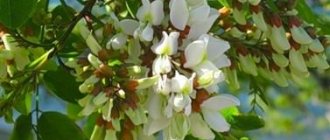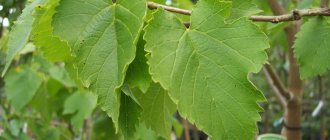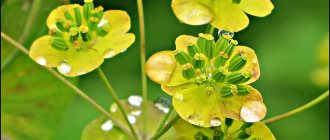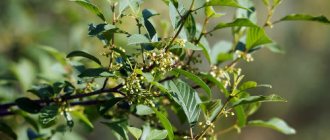Habitat and appearance
According to historical data, carob trees were cultivated in the Middle East approximately 4 thousand years ago. Most often, this unique plant can be found in the lands of the Mediterranean, South America, and also in Asia.
The heat-loving crop is grown in Italy and Portugal; in Spain, the area of industrial plantings exceeds 150 thousand hectares. Places of growth - rocky slopes, gorges, forests.
Ceratonia belongs to the evergreen plants of the legume family, reaching a height of 10-15 meters. Thanks to strong and long roots that penetrate deeply into layers of dry rocky soil, the plant receives enough moisture. The rapidly growing root system ensures good growth and development in infertile lands with rocky soil.
A typical representative of the Mediterranean flora is a dioecious plant, which during flowering produces many racemes with sharply scented flowers arranged in a spiral. The carob tree begins to bloom only in the 6th year of life with the onset of autumn.
The inconspicuous calyx of frequently occurring bisexual flowers has its own characteristics:
- the female flower is equipped with a pistil;
- the male individual has 5 stamens.
A round or hemispherical crown adorns the top of an erect, powerful trunk, covered with rough brown bark with traces of cracking. A dense crown with hard oval leaves on curved branches hides dark green pods up to 30 cm long, inside which legume seeds with hard and tart pulp ripen.
Due to the astringent and pungent taste of green fruits, they are not used as food, waiting until the beans, which have a wide range of beneficial properties, ripen. Ripe fruits with a sweetish taste are obtained from pods that have turned dark brown.
Carob trees are not colonized by parasitic insects due to the bactericidal properties of the bark and leaves. Among many peoples, a plant of amazing purity is revered as sacred.
Carob - what is it and how is it used?
A unique plant called Ceratonia grows exclusively on the Mediterranean coast. This is a huge tree of the legume family, reaching 20 m in height , which produces pod-like sweet fruits. It is thanks to them that the tree is called carob. The pods are filled inside with dense seeds and sweet pulp, which are widely used in the food industry due to their beneficial properties.
It is interesting that carob grains have a constant weight ; previously they were used to weigh jewelry - pearls and semi-precious stones. This is how the concept of carats appeared. From these same beans a substance called locust bean gum is extracted. The fruits are soaked, peeled and the main nutrient mass is used to obtain a food thickener and emulsifier E410 .
The soft part of the fruit is also used for food. There are two main products obtained from the horns - syrup and a dry powder called carob . To obtain the syrup, the peeled pods are placed in water and the infusion is evaporated until a thick viscous liquid similar to honey is formed. And the powder is obtained by drying the pods and grinding the raw materials into a fine-grained mass.
The plant is a relative of cocoa and coffee, and therefore has much in common with them in terms of taste. It is often used as a beverage, a sauce for baking and fruit salads, as a food additive in the confectionery and other culinary industries, and as a homemade panacea for a variety of ailments.
Benefits of using carob
In the countries where this heat-loving plant grows, its seeds are traditionally used as a cocoa substitute. With a low calorie content and the absence of caffeine, the invigorating drink is not addictive and prevents the leaching of calcium from the body, which cannot be said about traditional chocolate and cocoa.
The high content of phytoestrogens inside the sugar-rich fruits guarantees their antiviral, antifungal, and anti-inflammatory effects. The use of beans is important in the fight against hormone-dependent tumors; carob seeds are used as a replacement for estrogens before and after menopause.
Carob powder is obtained from carob pods, which is used to treat warts, constipation, heartburn and cough. Gluten-free bread is baked from brown seed flour and is used to treat celiac disease, obesity, and vomiting in pregnant women.
The cleansing and tonic properties of carob are used in cosmetology, and carob syrup helps cure nervous system disorders, sleep disorders, loss of strength, and loss of kidney function.
Benefits of carob syrup
Carob syrup is an immunomodulatory and tonic product, known since ancient times for its nutritional value and beneficial properties.
This product contains: - all B vitamins; — microelements and minerals; - tannins; — organic acids; - starch; - pectin; - protein; - natural sugar.
In fact, carob syrup is a natural chocolate substitute that has its own specific smell and sweet taste. The syrup is obtained by evaporating finely chopped fruits with water.
Sugar is not added to it, so it can be consumed by diabetics, as well as used in dietary nutrition. Syrup contains three times more calcium than milk. This sweet substance has virtually no contraindications.
Chemical composition of carob
The fruits of the evergreen plant, rich in useful substances, are used in official and unofficial medicine as an astringent, antibacterial, and expectorant. The seeds of the exotic culture are famous for their hemostatic, diuretic and tonic effects.
Their value is explained by the presence of important elements:
- sucrose, fructose, glucose;
- tannins, starch, protein;
- vitamins with a predominance of group B;
- microelements - iron, magnesium, calcium, zinc, iodine.
The pulp of carob fruit contains more than 50% sugar, almost 40% sucrose, the content of glucose and fructose reaches 6-7%, which allows the plant to be used as a sugar substitute.
A nutritious resin with thickening and stabilizing properties is extracted from the protein-rich seeds of ceratonia. The presence of 18% lipids (saturated, unsaturated fatty acids) and 20% tannins (condensed) explains the antioxidant qualities of the pods.
Breadfruit is good for diabetics. The syrup, which has no side effects, is used as a natural sweetener. Cooks use flour to prepare harmless chocolate, which is suitable for diabetics.
Characteristics of carob
When fresh, the pods are slightly sweet and not bitter, with a pleasant caramel flavor. In fact, the ripe pods can even be eaten from the tree, but remember that the small, hard seeds are not edible when raw. Fresh pods are the best and most nutritious form to consume.
Carob was already grown in Asia Minor 3,000 years ago, and today it is also popular in Greece, Cyprus and Sicily. Carob is used in the kitchen mainly in powder form, similar to cocoa in both appearance and taste, but does not contain theobromine and oxalic acid, which interfere with the absorption of calcium in the body.
Pharmacological properties
The therapeutic effect of carob fruits is associated with an abundance of chemicals that are of particular value for cleansing the body and restoring normal digestion. The presence of vitamin B in the seeds can solve problems with vision, and the trace element zinc can help with the production of testosterone (male sex hormone).
The heat-loving plant helps strengthen the immune system at any age, and also has a number of beneficial properties:
- due to the high percentage of lignin, fibrin, pectin, the seeds are used to normalize the intestinal flora, which reduces the number of unfriendly bacteria;
- the thickening properties of pectin demonstrate antioxidant properties, helping to thin the blood and lower cholesterol levels, removing toxins;
- to cleanse the body of toxins in the treatment of cancer, they use the enveloping effect for which the ancient representative of the southern flora is famous;
- after using carob fibers, the liquid turns into a colloidal gel against the background of relaxation of the intestinal walls, which normalizes its functions;
- tannins in carob extract exhibit pronounced antiviral and anthelmintic activity and antioxidant properties;
- The pods contain galactomannans (polysaccharides), which suppress hunger by reducing ghrelin (a peptide).
Carob trees are actively grown in Cyprus, calling them “black gold”. The village of Anogyra is famous for its Ceratonia Museum, where sets of devices for processing fruits and preparing sweets are stored.
Therapeutic effects
The seeds of Tsaregrad pods, rich in tannin and pectins, are used to prepare natural medicines that stop diarrhea. A herbal remedy with an astringent effect, relieves and soothes abdominal discomfort, protects the prostate gland from inflammatory processes.
The famous southern culture has a wide range of medicinal effects:
- Antitumor. Based on the results of studies conducted on mice, a significant decrease in the proliferation of T1c cells was established by inducing apoptosis after taking the plant extract for hepatocellular carcinoma. The pods and young leaves, the extracts of which react to benzodiazepine (peripheral) receptors, have particular antitumor value.
- Antidiabetic. During glucose tolerance testing, a carob-based herbal preparation was added to the oral solution. As a result, it was possible to reduce the hypoglycemic index in diabetics with type 2 disease. The effect on the insulin threshold in diabetic patients has been experimentally confirmed.
- Antidiarrheal. In a laboratory study, 36 bacterial strains were isolated from the duodenum of infants with diarrhea. 20 samples out of the total reacted to the composition of carrot soup enriched with extract of Tsaregrad pods.
- Antioxidant. The effect of the urea fraction from the polyphenols of carob bean gum on free radicals was tested. The result showed a stronger inhibitory effect on lipid oxidation than other polyphenolic compounds - procyanides, catechins.
- Antivirus. It was found in vitro that polysaccharides isolated from carob fruits are able to block the replication of rubella viral agents.
- Gastroesophageal. A few studies confirm the ability of pulp extracted from ceratonia raw materials to reduce the degree of reflux. It manifests itself as vomiting and regurgitation in infants.
- Digestive. An effect of increasing viscosity with a change in the structure of gastric masses was discovered, which contributes to better digestion of starch compounds. Tests on children have confirmed that adding carob extract to food slows the rate of bowel movements while reducing the concentration of uric acid.
- Hyperlipidemic. The insoluble dietary fiber from the plant pulp has been clinically tested for its ability to lower lipid levels. The beneficial properties of beans are recommended for use in dietary nutrition for high cholesterol levels in adults and adolescents.
Due to the increased sugar content, bean pulp has a sweet taste along with an abundance of nutritional properties. The moderately relaxing effect of dried beans is used as a laxative for constipation to cleanse the intestines.
A decoction of ceratonia pods, which demonstrates a binding effect, treats diarrhea and irritable bowels.
The moisturizing and softening properties of ripened seed flour help treat cough.
The seemingly contradictory properties of the exotic tree show how the body reacts to the way the herbal medicine is prepared depending on the specific medical problem.
Useful composition of heat-loving horns
With the high nutritional value of the fruit, only the pulp of legume grains is suitable for cooking. You can make medicinal tea from the crushed grains. Recipe: Brew two tablespoons of carob with boiling water, leave for 15 minutes under a tightly closed lid, then pour into cups.
Benefits of carob fruits:
- slow down the process of sugar absorption with a slow increase in blood glucose levels;
- a high percentage of plant proteins is similar in nutritional value to animal proteins;
- in the absence of fats, beans are enriched with fatty acids that the human body does not synthesize;
- natural substances of sweet fruits protect against oncology and intestinal dysbiosis;
- a decoction of beans heals wounds on the mucous membranes, lotions soothe inflammation of the eyes and throat.
A food additive, gum, is prepared from the seeds of ceratonia. The powder is used as a stabilizer or emulsifier for making ice cream, processed cheese, desserts and canned food.
A harmless additive that improves digestion, it is added to baby food, used as an expectorant, and added to the composition of creams and gels for skin care.
What is carob: composition, calorie content
What is carob? Carob (from the English carob) is a crushed powder obtained from pre-dried carob fruits. This powder has a pleasant, pronounced aroma of cocoa, but does not contain harmful fats and caffeine, plus it has a whole list of beneficial properties that arise from the composition of carob, where you can find:
- vitamins: B1 (thiamine), B2 (riboflavin), B3 (niacin), B6 (pyridoxine), B9 (folic acid), E (tocopherol), A (retinol), D, choline
- trace elements: sodium, potassium, calcium, copper, iron, magnesium, manganese, phosphorus, selenium, zinc
- organic fiber
- antioxidants
- proteins
Carob can be raw or fried: what are the differences? Firstly, they differ in taste and smell, and secondly, when fried, carob loses some of its beneficial properties, so raw carob is considered more useful. Carob powder has found its main use in the confectionery industry, and this product is also increasingly used in the diet by people following a pp diet.
The calorie content of carob per 100 grams is:
- energy value: 222 kcal
- proteins: 4.62 grams
- fat: 0.65 grams
- carbohydrates: 49.08 grams
The glycemic index of carob is 40 units, which automatically makes this product ideal for diabetics.
How to use carob
People use the medicinal properties of the pod culture in various areas of their lives. Herbal teas are prepared from beans, extracts and capsules are produced, flour is obtained from mature pulp, and syrup and gum are made. Extracts, carob, and gum are added to cosmetics - masks, scrubs, gels, using the thickening properties of the natural product.
In folk medicine
Among the folk remedies used to treat nervous disorders, colds, and diarrhea, you can find recipes for preparing homemade medicines:
- Tea for colds. A tablespoon of crushed fruits (dried) is poured into a glass of water. After infusion (15 minutes), you can drink the tasty medicine.
- Decoction against diarrhea. After grinding the beans (500 g), pour boiling water (500 ml) over them and boil for an hour. The strained drink is drunk three times a day, 15-20 ml.
- Pain with diarrhea. Plant materials (20-30 g) are mixed with starch and diluted with water or milk. Use until symptoms of the disorder subside.
- Anti-vomiting gum. A tablespoon of the product is diluted with a glass of water. To treat infants, gum (1 g) is added to breast milk during feeding.
In countries where the carob tree is registered in the State Pharmacopoeia, syrups, mixtures, powders and capsules are produced from the seeds of the plant. Medicines have an expectorant, anthelmintic, diuretic effect, and help strengthen the immune system.
Carob in cooking
By grinding dried carob fruits, flour is obtained - carob, rich in plant proteins and carbohydrates. For grinding, choose raw or roasted beans; heat treatment does not harm the beneficial substances.
The powder, which tastes like cocoa, contains natural sugar, which allows you to avoid adding sweeteners when used in cooking. What is prepared from carob:
- surrogate cocoa or decaffeinated coffee;
- alternative type of chocolate for diabetics;
- chocolate icing for sweets, cheeses, baked goods;
- syrup that does not cause side effects;
- alcoholic and soft drinks, compotes.
Among the culinary uses of carob, the most popular recipes are butter and cocktails. To make chocolate butter you will need coconut oil (100 g). Bean powder is added to the product softened in a water bath. Stir thoroughly and cool.
To prepare a chocolate drink with carob, you will need dates (20 g), almond milk (200 ml), blackberries (150 g). Place all ingredients in a blender bowl, add carob (30 g), and beat.
In the territories of the South African regions, carob is valued in jewelry. The resin flowing down the trunks of the pod plant over millions of years turned into scatterings of expensive amber.
Carob: what is it?
Carob (carob) is a powder that is obtained by grinding dried carob fruits. The uniqueness of the carob tree lies in the fact that it is a tree whose fruits are classified as legumes, although most legumes are represented by plants: peas, peanuts, chickpeas, mung beans, and so on. The carob tree can reach a height of more than ten meters. The tree grows in the Mediterranean.
Most often, carob is used in baking, and also as a complete replacement for cocoa and caffeine.
.
This is especially true for people who cannot or do not want to consume caffeine, as well as those who want to give up bad habits.
Carob also has healing properties and is widely used in folk medicine; we will talk about its beneficial properties below. Interesting fact: During the Roman Empire, carob seeds were the unit used to measure mass.


